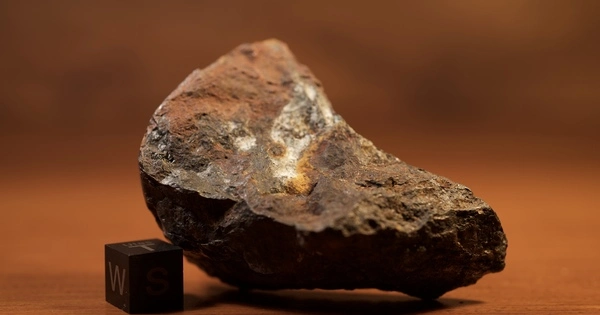Water in the form of hydrated minerals has been discovered in certain types of meteorites, particularly carbonaceous chondrites. These meteorites are supposed to be primitive and to have preserved material from the early solar system. Analysis of iron meteorites from the solar system’s early years indicates that the planetary ‘seeds’ that eventually created Earth had water.
When our Sun was a newborn star 4.56 billion years ago, our solar system was nothing more than a disk of rocky dust and gas. Tiny dust particles collected over tens of millions of years, like a snowball rolling larger and larger, to create kilometer-sized “planetesimals” – the building blocks of Earth and the four core planets.
Researchers have long sought to comprehend the ancient settings that gave rise to these planetesimals. Water, for example, is today abundant on Earth, but has it always been so? To put it another way, did the planetesimals that accreted into our planet have water?
A new study combines meteorite data with thermodynamic modeling to establish that the earliest inner solar system planetesimals must have formed in the presence of water, challenging conventional early solar system astrophysical models.
Iron meteorites have been somewhat neglected by the planet-formation community, but they constitute rich stores of information about the earliest period of solar system history, once you work out how to read the signals.
Paul Asimow
The study, published in the journal Nature Astronomy, was done in the laboratory of Paul Asimow (MS ’93, PhD ’97), Eleanor and John R. McMillan Professor of Geology and Geochemistry.
Researchers have samples of the earliest years of the solar system in the form of iron meteorites. These meteorites are the remnants of the metallic cores of the earliest planetesimals in our solar system that avoided accretion into a forming planet and instead orbited around the solar system before ultimately falling onto our planet.
The chemical compositions of meteorites like these can reveal information about the environments in which they formed and answer questions like whether the building blocks of Earth formed far from our Sun, where cooler temperatures allowed the existence of water ice, or if they formed closer to the Sun, where the heat would have evaporated any water and resulted in dry planetesimals. If the latter is right, Earth would have formed dry and received water later in its evolution.
Though the meteorites themselves do not contain water, scientists can infer its long-lost presence by studying its impact on other chemical elements.

Water is composed of two hydrogen atoms and one oxygen atom. In the presence of other elements, water will often transfer its oxygen atom away in a process called oxidation. For example, iron metal (Fe) reacts with water (H2O) to form iron oxide (FeO). A sufficient excess of water can drive the process further, producing Fe2O3 and FeO(OH), the ingredients of rust. Mars, for example, is covered in rusty iron oxide, providing strong evidence that the Red Planet once had water.
Damanveer Grewal, the new study’s first author and a former Caltech postdoctoral scholar, specializes in utilizing chemical signals from iron meteorites to learn about the early solar system. Though any iron oxide from the earliest planetesimals has long since vanished, the team was able to estimate how much iron was oxidized by evaluating the metallic nickel, cobalt, and iron compositions of these meteorites. These three elements should be present in nearly equal proportions in comparison to other basic materials, thus if any iron was “missing,” it would signal that the iron had been oxidized.
“Iron meteorites have been somewhat neglected by the planet-formation community, but they constitute rich stores of information about the earliest period of solar system history, once you work out how to read the signals,” says Asimow. “The difference between what we measured in the inner solar system meteorites and what we expected implies an oxygen activity about 10,000 times higher.”
The researchers discovered that iron meteorites assumed to be from the inner solar system contained almost the same amount of missing iron metal as meteorites thought to be from the outer solar system. For this to be true, the planetesimals in both groups of meteorites must have formed in a region of the solar system where water was present, meaning that the building blocks of planets accreted water from the start.
The presence of water in these planetesimals calls into question many of the solar system’s current astrophysical hypotheses. Water would have existed only if planetesimals originated at Earth’s current orbital position if the inner solar system was substantially hotter than current models indicate. Alternatively, they may have formed further out, where it was cooler, and migrated in.
“If water was present in the early building blocks of our planet, other important elements like carbon and nitrogen were likely present as well,” said Grewal. “The ingredients for life may have been present in the seeds of rocky planets right from the start.”
“However, the method only detects water that was used up in oxidizing iron,” Asimow goes on to say. “It is not sensitive to excess water that could eventually form the ocean.” As a result, the study’s findings are compatible with Earth accretion models that predict the late addition of even more water-rich material.”
















